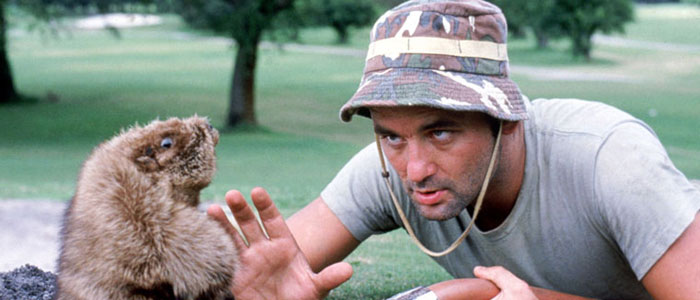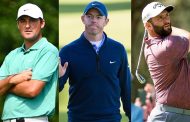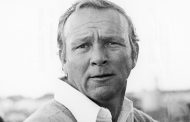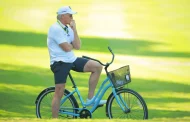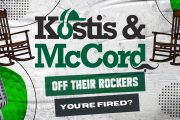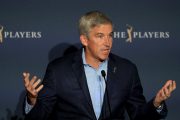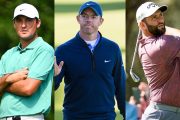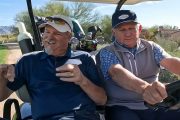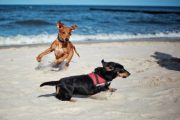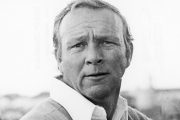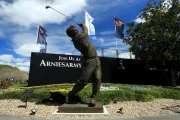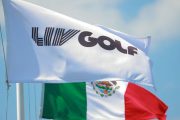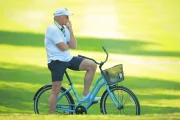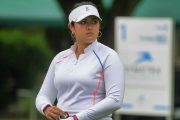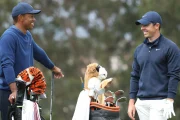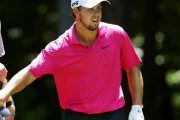Cue the golf course sprinklers.
Cue “I’m Alright” with Kenny Loggins.
Anyone out there not know that we’re about to talk a little Caddyshack?
Give credit to Entertainment Weekly film critic Chris Nashawaty. Thirty-eight years after the movie Caddyshack defied all the odds and became a classic, Nashawaty took on a project to tell the insider story and his book comes out tomorrow:
Caddyshack: The Making of a Hollywood Cinderella.
It’s tough to find any golfer who has only seen the movie once, tough to find anyone who has only seen it twice.
Tiger Woods knows all the lines by heart — bet you do to.
How about the famous “Cinderella Boy” scene with Bill Murray? Total classic moment. They shot that scene in just one take.
What this book explores is how the production of this movie happened, which was a miracle in and of itself.
Let’s take a quick trip back to late 1979.
Harold Ramis, Brian Doyle-Murray (brother of Bill) and Doug Kenney came up with the idea for the movie, going back to their teenage days as caddies up north.
Jon Peters (executive producer) took the project on. It’s tough to find a golf course up north willing to shut itself down in August-September to accommodate the filming of some wacky movie.
Ah, but South Florida — golf courses are a virtual ghost town in the heat and humidity of August and September.
Rolling Hills in Davie became the site for the film. But remember — August and September in Florida is the height of hurricane season (more on that later).
Then came the casting problem. They needed some star power and went after Chevy Chase (Saturday Night Live) and got him. They added Ted Knight who had just finished Emmy-winning work with the Mary Tyler Moore Show and then there was Rodney Dangerfield. Rodney was a hot commodity in the world of standup comedy but had never been in a movie. At first they thought about Don Rickles for the part of Al Czervik but would end up with Dangerfield.
Here’s an excerpt from the new book with Peters talking about that first meeting with Dangerfield.
With Chase signed on, the team moved on to Al Czervik. For the part of the film’s superwealthy, insult-spewing bull in a china shop, Ramis had originally been thinking of Don Rickles, who could turn anyone unlucky enough to fall into his trash-talking crosshairs into trembling, sobbing jelly. “He had the right obnoxiousness,” said Ramis (who died of vasculitis in 2014). But by the summer of 1979, Rodney Dangerfield was on an incredible run of volcanic guest appearances on The Tonight Show, often reducing Johnny Carson to a slumped, convulsive fool, wiping tears from his eyes. “He was killing it every time,” said Ramis.
“We brought Rodney in to the studio,” says Jon Peters, Caddyshack’s executive producer. “He comes in wearing this aqua-blue leisure suit and takes out a plastic bag and does two lines of coke. He undoes his shirt and says, ‘Where’s the p—-?’ ” It was a hell of a first impression. Dangerfield would end up getting $35,000 for his role. And though he would always credit Caddyshack for launching his movie career, he would often do so while complaining that he actually lost $150,000 on the film, having given up a month of headlining in Vegas to shoot it.
How’s that? Those two paragraphs by themselves already make this one a tempting read.
The movie’s opening credits list, in order: Chase, Dangerfield, Knight and finally, Murray.
Murray was the wildcard, but he’d make the character Carl Spackler into a cult figure.
Tiger Woods got into the Murray-created character in an American Express commercial.
There were a bunch of unknowns in the flick, including Michael O’Keefe, who would make the name “Danny Noonan” famous at virtually every golf course in the world.
O’Keefe, in the book, also talked about the drug culture that fueled the cast, after all, it was the late 70s:
Cocaine was “driving everyone,” says O’Keefe, who calls his 11 weeks in Florida “a permanent party.” “It would be lunch and someone would say, ‘Do you want to do a line?’ ‘Yeah, sure!’ It was no big deal. This was the ’70s.”
Throw in Hurricane David plowing through in September and you had one giant mess.
There were also other obstacles, like the fact that Chase and Murray didn’t like each other. They managed to put their differences aside and the result was the “Cannonball” scene from the part where Webb stumbles into Spackler’s unsightly living quarters.
It was the one and only time in their careers where Murray and Chase appeared together.
Murray was the fourth guy billed in the opening credits. He earned $250,000 for six days work, more than he made in a year on Saturday Night Live. Most of his stuff was improvised. He left us with the famous “Dali Lama himself” scene and many more.
At the end of the day, this movie cost $6 million to produced and grossed right at $40 million.
Miniscule numbers by today’s standards. But back then, a huge profit.
No one had any idea of how it would become part of the golf world’s culture.
It was, as the sub-title of the book says — A Hollywood Cinderella Story.


